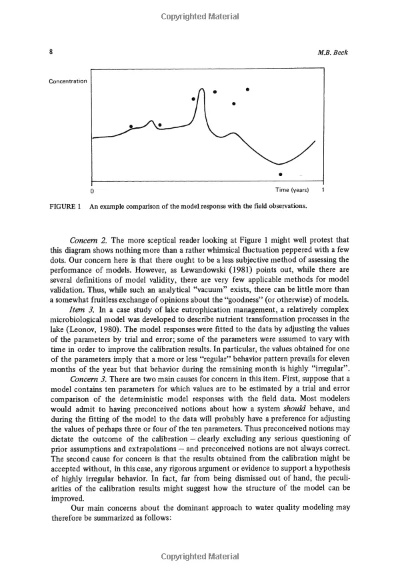Understanding the Essentials of Textile Quality Testing:A Comprehensive Guide
This comprehensive guide delves into the intricacies of textile quality testing, providing a thorough understanding of the fundamentals that underpin this critical process. From the selection and preparation of materials to the application of various techniques, this guide covers every aspect of textile testing, ensuring that readers are equipped with the knowledge necessary to perform high-quality tests.,The first section of the guide focuses on the importance of textile testing and why it is essential for ensuring the quality and durability of fabrics. It discusses the various types of tests used in textile industry, including mechanical properties, thermal properties, dimensional stability, and colorfastness.,The second section explores the different types of testing equipment and their applications, such as tensile testing machines, calipers, and dyeing machines. It also discusses the importance of maintaining proper test conditions, including humidity levels, temperature, and exposure to light.,The third section delves into the testing methods used in textile quality testing, including weight measurement, thickness measurement, and colorimetric analysis. It also covers the interpretation of test results and the factors that can affect their accuracy.,In conclusion, this comprehensive guide provides a clear and concise overview of textile quality testing, covering all essential aspects from selecting appropriate materials to interpreting test results. With its practical approach and detailed explanations, this guide is an essential resource for anyone involved in the textile industry.
Introduction: In the world of textiles, quality is paramount. Whether it's for clothing, home furnishings, or industrial applications, the right materials are essential for their performance and durability. That's why textile testing is crucial in ensuring that products meet industry standards and consumer expectations. In this guide, we will explore the fundamentals of textile quality testing, including methods, parameters, and real-world examples.
Textile Quality Testing Methods: There are various methods used in textile quality testing to evaluate the properties of materials. Some common methods include:

-
Tensile Testing: This method measures the strength and resilience of a textile material under tension. It involves pulling a sample until it breaks.
-
Tear Testing: This method assesses the tear resistance of a textile material. It involves pulling a sample apart at a controlled speed.
-
Burst Testing: This method evaluates the burst strength of a textile material. It involves exposing the material to pressure until it bursts.
-
Shrinkage Testing: This method measures the amount of shrinkage a textile material undergoes during processing. It involves measuring the change in size before and after a specific treatment.
-
Color Testing: This method evaluates the color consistency and intensity of a textile material. It involves comparing samples under different lighting conditions.
-
Dyeability Testing: This method evaluates the ability of a textile material to accept dyes. It involves applying dyes to the material and evaluating the color change.
-
Flammability Testing: This method assesses the combustibility of a textile material. It involves exposing the material to an ignition source and measuring the time taken for it to burn.
-
Water Absorption Testing: This method measures the amount of water a textile material absorbs. It involves placing a sample in a container filled with water and measuring the weight gain over time.
Real-World Example: Let's take a look at a real-world example involving a textile product that requires high-quality testing to ensure its safety and performance.
Company: ABC Textiles Product: High-Performance Sportswear
ABC Textiles produces sportswear made from synthetic fibers, such as polyester and nylon. To ensure that their products meet the highest standards of safety and comfort, they conduct rigorous quality testing on their materials.
One of the key tests they perform is the tear test, which measures the strength of the fabric. They use a specialized machine that applies force to the sample while monitoring the breaking point. The results are then compared to industry standards to determine if the product meets the required performance criteria.
Another important test is the color test, which evaluates the consistency and intensity of the colors on the fabric. They use a colorimeter to measure the hue, saturation, and value of each sample, and compare these values to the desired specifications.

In addition to these standard tests, ABC Textiles also conduct additional tests to identify potential issues with their materials. For example, they may perform a flame test to ensure that the fabric does not catch fire when exposed to flames. They may also conduct a moisture absorption test to evaluate how well the fabric retains its shape and integrity in wet conditions.
By conducting these comprehensive quality testing procedures, ABC Textiles can ensure that their sportswear products are safe, durable, and meet the needs of athletes and consumers alike.
Conclusion: Quality control in textiles is essential for ensuring that products meet the demands of consumers and industry standards. By understanding the various methods and parameters used in textile quality testing, companies can develop effective strategies for identifying and addressing potential issues in their materials. With proper testing and quality control, textile products can provide long-lasting solutions for a wide range of applications.
今天我们将讨论纺织品检验的题目,包括其重要性、常见问题和检验方法,纺织品是日常生活中不可或缺的商品,其质量直接关系到人们的健康和安全,对纺织品进行严格的检验是确保其符合质量标准的重要环节。 及案例分析 一:面料质量检测
案例:某品牌新推出的夏季服装面料。
检验目的:检测面料的质量,确保其符合纺织品的国家标准。
检验方法:
(1)外观检查:观察面料颜色、纹理、质地等外观特征。 (2)纤维含量检测:使用纤维分析仪对面料中的纤维含量进行检测。 (3)抗皱性测试:使用抗皱测试仪对面料进行抗皱性能测试。
根据检测结果,可以判断该面料是否符合纺织品的国家标准,为后续的生产和销售提供依据。 二:纱线质量检测
案例:某品牌纺织品的纱线质量检测。
检验目的:检测纱线的质量,确保其满足纺织品的性能要求。
检验方法:

(1)外观检查:观察纱线的颜色、光泽、质地等外观特征。 (2)长度和直径检测:使用长度和直径测量仪器对纱线进行长度和直径的测量。 (3)强力测试:使用强力测试仪对纱线进行强力测试,确保其满足纺织品的性能要求。
通过上述案例可以看出,纱线质量对于纺织品的性能至关重要,在纺织品检验中,纱线质量的检测是必不可少的环节。
纺织品检验的重要性与意义
纺织品检验是确保纺织品质量的重要环节,其重要性体现在以下几个方面:
- 保障消费者权益:纺织品质量直接关系到消费者的健康和安全,通过严格的检验,可以确保纺织品符合国家标准,为消费者提供安全、健康的商品。
- 提高产品质量水平:通过纺织品检验,可以发现并改进生产过程中的问题,提高产品质量水平,也可以为企业的质量控制提供依据,促进企业的持续改进和发展。
- 维护市场秩序:纺织品检验是维护市场秩序的重要手段,只有符合国家标准的产品才能进入市场,保证市场的公平竞争。
纺织品检验的方法与步骤
纺织品检验的方法与步骤主要包括以下几个方面:
- 外观检查:观察面料和纱线的外观特征,包括颜色、纹理、质地等。
- 纤维含量检测:使用纤维分析仪对面料和纱线中的纤维含量进行检测。
- 抗皱性测试:使用抗皱测试仪对纱线进行抗皱性能测试,还可以进行拉伸性能测试、扯断强度测试等进一步验证纱线的性能。
- 数据记录与分析:记录检验过程中的数据,并进行数据分析,判断样品是否符合国家标准,还可以根据数据分析结果提出改进意见和建议。
纺织品检验的注意事项与建议
在进行纺织品检验时,需要注意以下几点:
- 严格按照国家标准进行检验,确保检验结果的准确性,还需要注意样品的质量和数量,避免出现漏检或误检的情况。
- 在检验过程中,需要注意安全防护措施,避免样品受到污染或损坏,还需要注意保持工作环境的整洁和卫生。
- 对于不合格的样品,需要及时进行处理和整改,避免影响企业的生产和销售,还需要加强企业的质量控制和管理,提高产品质量水平。
结论与展望
纺织品检验是确保纺织品质量的重要环节,其对于保障消费者权益、提高产品质量水平、维护市场秩序都具有重要意义,在未来的纺织品检验工作中,需要进一步加强检验方法和标准的制定和完善,提高检验结果的准确性和可靠性,还需要加强企业的质量控制和管理,提高产品质量水平,促进企业的持续改进和发展。
Articles related to the knowledge points of this article:
Lhasa Textile Recycling Agent A Sustainable Solution for Our Community
The Benefits of Choosing Quality Sleep Fabrics for a Better Nights Rest
A Profile of PJSH Textiles The Fabric of Modern Elegance
Strategies for Degrading Formaldehyde in Textile Products
A Comprehensive Guide to Purchasing Inventory Textiles in Zhejiang



